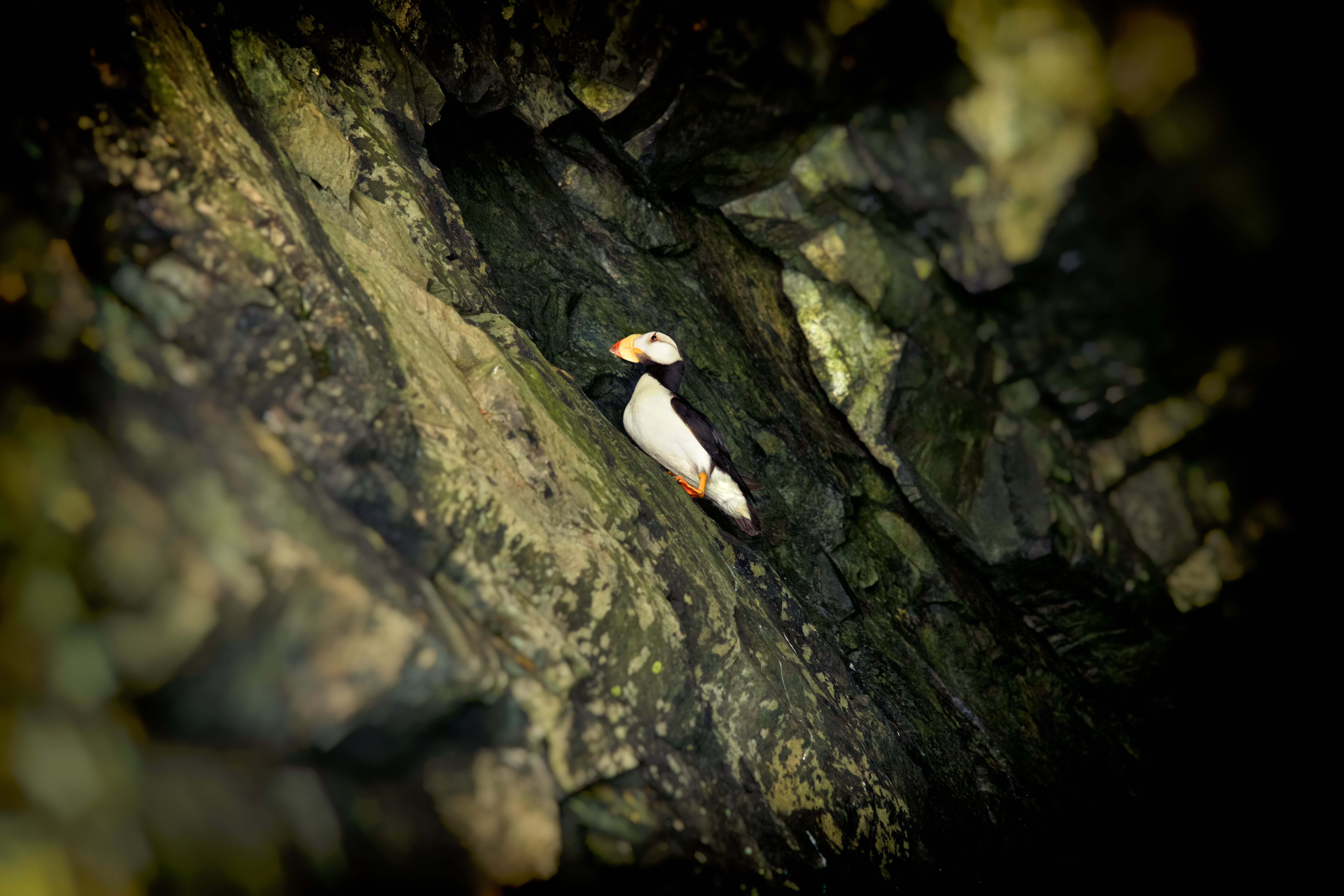Puffins
Two species of puffins can be seen in Prince William Sound near Valdez: the horned puffin (Fratercula corniculata) and the tufted puffin (Fratercula cirrhata). Horned puffins are named for the black skin "horn" above their eyes. Tufted puffins are named for the tufts of feathers that extend from the back of their heads. Puffins are in the Family Alcidae, making them relatives to other members of the auk family that may be spotted around Valdez, such as the guillemots.

Horned Puffin. Photo by Anadyr Adventures
Behavior
Puffins spend much of their time in or on the water, where they feed on small fish and krill. Puffins are gregarious, and flock to nesting colonies where they nest in burrows in hillsides or on cliff faces to raise their young.
Safety & Etiquette
"Puffins may desert their nests if disturbed by humans during nesting. Most seabird nesting colonies in Alaska are protected by federal and state laws. Permits are required to land on most seabird nesting islands," Alaska Department of Fish & Game
Make sure to view puffin nesting colonies from a safe distance if visiting Glacier Island or any other shorebird nesting area.

Horned Puffin on a rock wall. Photo from Seed Media.
Viewing Locations
Both tufted puffins and horned puffins may be found in Prince William Sound. Many of them nest during the summer on Glacier Island, and may be spotted on glacier and wildlife tours out of Valdez that pass by the island while heading to Columbia Glacier or Meares Glacier. Puffins may also be seen as part of guided kayak tours of Glacier Island.
Puffins Fact Sheet
From Alaska Department of Fish & Game








